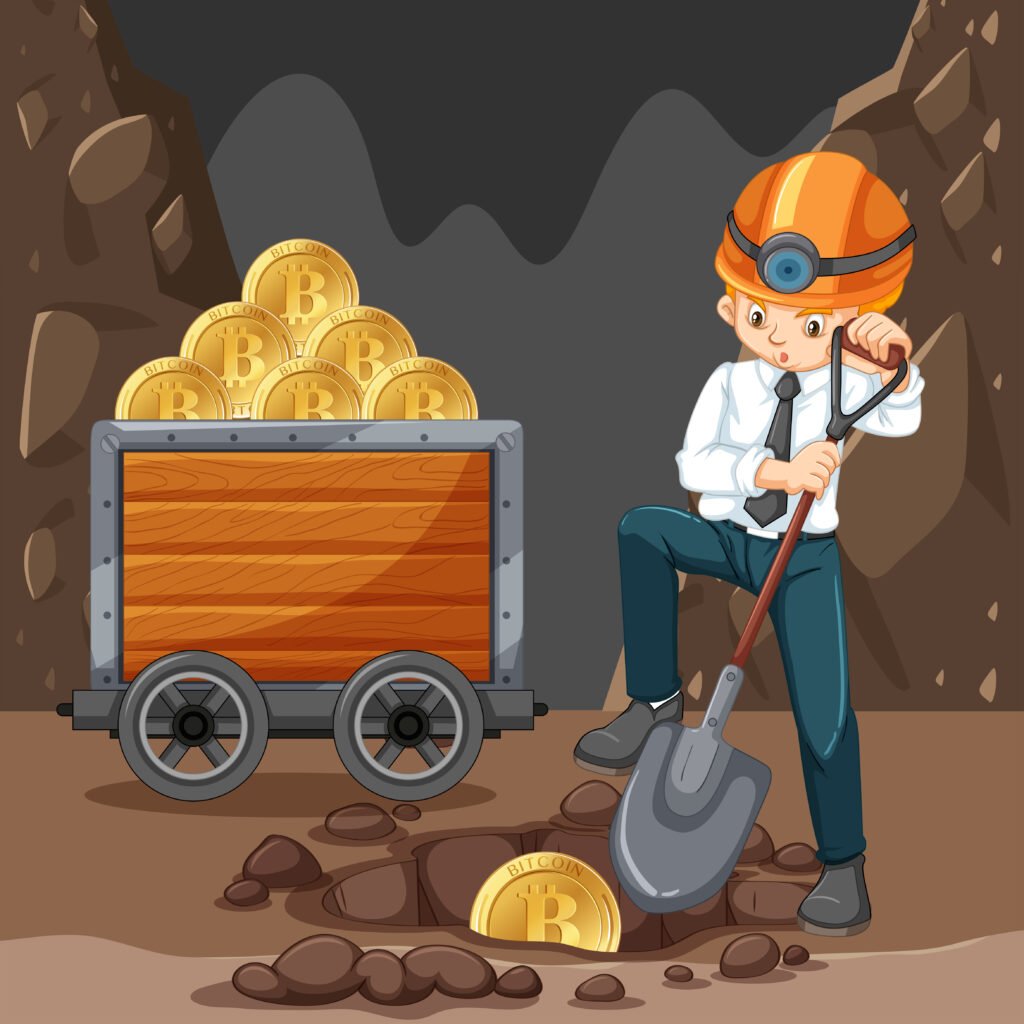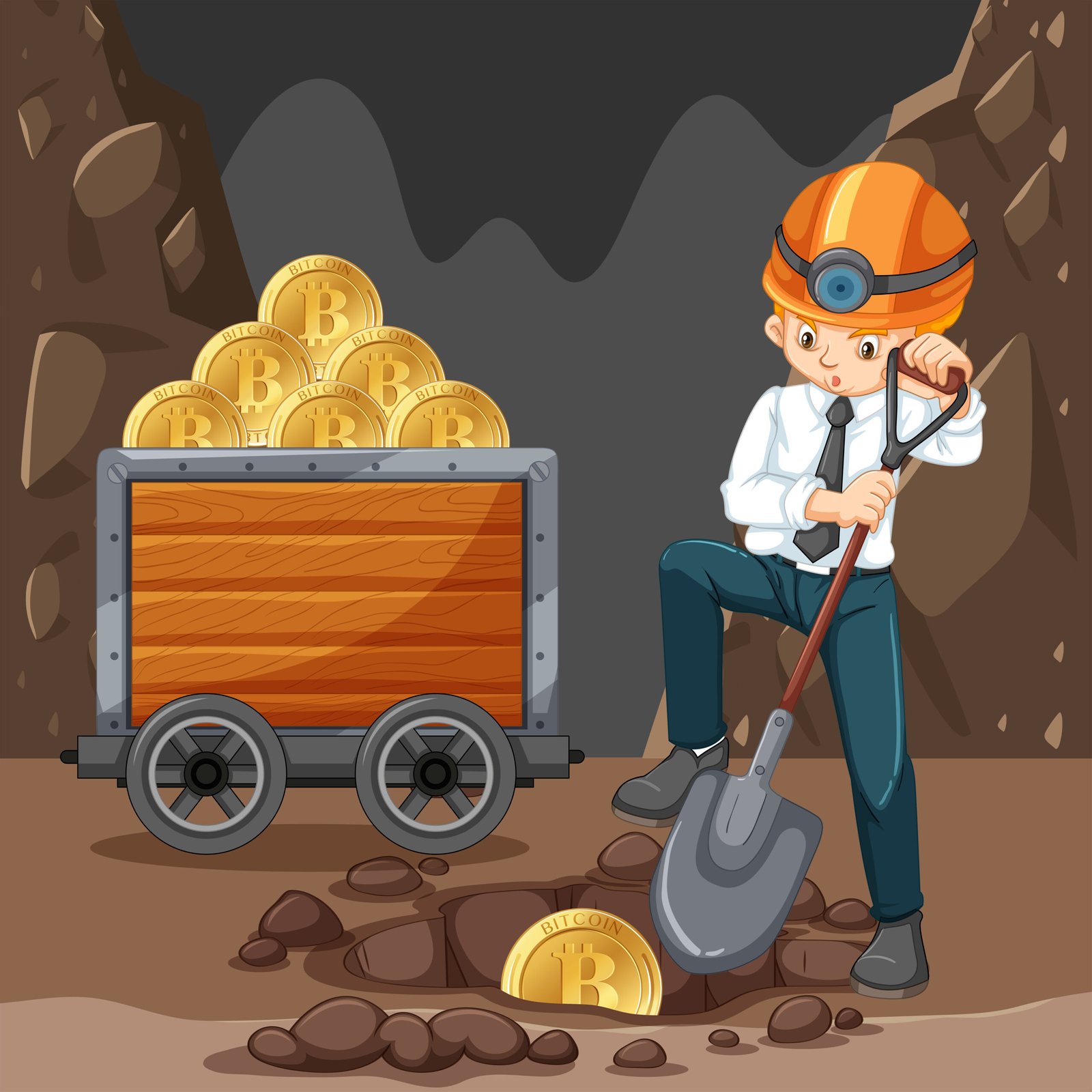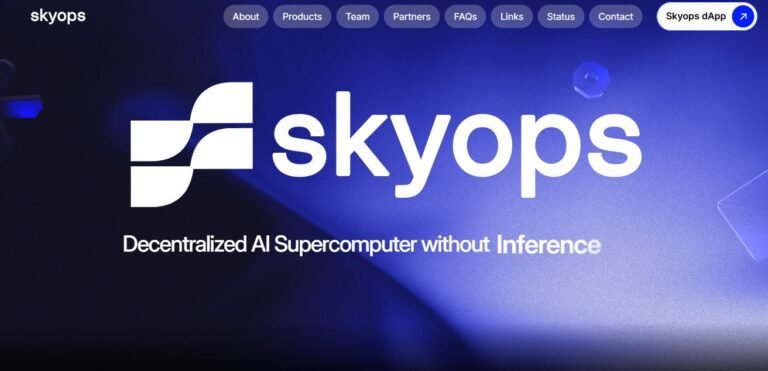What Is Crypto Mining? A Simple Guide for New Investors
Understanding the Basics
What Does “Mining” Mean in Cryptocurrency?
Crypto Mining: In the world of cryptocurrency, “mining” refers to the process of validating and recording transactions on a blockchain network. Miners use powerful computers to solve complex mathematical problems—also known as cryptographic puzzles. When a problem is solved, the miner gets the right to add a new block to the blockchain.
This process is part of a system called Proof-of-Work (PoW), which ensures that only legitimate transactions are added to the public ledger. As a reward for their effort and computational power, miners receive a block reward in the form of cryptocurrency (like Bitcoin or Kaspa).
Mining is competitive: the first miner to solve the puzzle wins the reward. That’s why it requires high-end hardware and consumes significant electricity.

Table of Contents
Why Do Cryptocurrencies Need Mining?
Mining is essential for the security and operation of many blockchain networks. Here’s why:
- Decentralization: In traditional banking, a central authority (like a bank) verifies and records transactions. In crypto, mining eliminates the need for that central authority by distributing the verification process across thousands of independent nodes.
- Consensus: Mining helps the network reach agreement—or consensus—on the state of the blockchain. Through Proof-of-Work, only valid transactions are added, preventing issues like double-spending.
- Security: The immense computing power required to mine blocks also secures the network. Attacking a well-mined blockchain like Bitcoin would require more computational power than the rest of the network combined—making it practically impossible.
In short, mining is the backbone of many cryptocurrencies, keeping them trustless, secure, and decentralized.
How Crypto Mining Works
Understanding how crypto mining functions behind the scenes can help you see why it’s so crucial to the blockchain ecosystem. Here’s a simple breakdown of the process:
The Role of Miners and Mining Nodes
Miners are individuals or organizations who dedicate computing power to support the blockchain. Each miner operates a node—a computer connected to the network—that performs key tasks:
- Collects and verifies pending transactions.
- Bundles verified transactions into a block.
- Competes to solve a mathematical puzzle (hashing).
- Broadcasts the valid block to the network once solved.
Once a block is verified by other nodes, it gets added to the blockchain permanently.
What Is a Blockchain and How Mining Adds to It
A blockchain is a digital ledger composed of linked blocks, where each block contains a list of transactions. Think of it as a chain of records where:
- Each block references the one before it (creating an immutable chain).
- Miners add new blocks by solving cryptographic puzzles.
- This “solving” process prevents fraud and ensures data integrity.
Without mining, no new blocks would be added, and the transaction process would halt.
Proof-of-Work Explained Simply
Proof-of-Work (PoW) is the original consensus mechanism used by major cryptocurrencies like Bitcoin. Here’s how it works:
- Miners compete to find a special number (called a “nonce”) that, when hashed with other data, produces a result below a target threshold.
- This process takes trillions of attempts per second—requiring significant computational power.
- The first miner to find the correct hash wins the right to add the block and earns the block reward.
The difficulty of this puzzle adjusts over time to keep block production steady. This mechanism ensures:
- Fairness: Every miner has a chance based on their computing power.
- Security: An attacker would need enormous energy and resources to override the system.
Types of Crypto Mining
Not all mining methods are created equal. Depending on your resources, technical skills, and goals, you might choose a different type of crypto mining. Here’s an overview of the main types:
Solo Mining
Solo mining means mining on your own without joining any mining pool. You rely entirely on your own hardware and internet connection to find and validate blocks.
Pros:
- You keep 100% of the block rewards.
- Full control over your mining setup.
Cons:
- Extremely low chances of finding a block unless you have industrial-grade equipment.
- Requires a large upfront investment and ongoing maintenance.
Best for: Advanced users with high-powered rigs and cheap electricity.
Pool Mining
Pool mining involves joining a group of miners who combine their computing power to increase the chances of earning rewards. When the pool finds a block, the reward is split among participants based on their contribution.
Pros:
- Steady and more predictable income.
- Lower entry barrier for beginners.
Cons:
- Pool fees typically apply (usually 1–2%).
- Less control and lower payouts per block.
Best for: Beginners and intermediate miners.
Cloud Mining
With cloud mining, you rent mining power from a remote data center. You don’t need to buy or maintain hardware—just pay a fee and receive a share of the mined coins.
Pros:
- No hardware setup or technical knowledge required.
- Ideal for users in areas with high electricity costs.
Cons:
- High risk of scams or unreliable providers.
- Profit margins can be slim or negative due to fees.
Best for: Passive investors with low risk tolerance and no interest in hardware.
GPU vs. ASIC Mining
The hardware you use also defines your mining type:
- GPU (Graphics Processing Unit) Mining:
Uses graphics cards. More flexible and works with many altcoins. Less efficient for Bitcoin. - ASIC (Application-Specific Integrated Circuit) Mining:
Purpose-built machines optimized for specific coins like Bitcoin. Much more powerful, but also expensive and limited in use.
| Feature | GPU Mining | ASIC Mining |
| Flexibility | High (many coins) | Low (coin-specific) |
| Cost | Moderate | High |
| Efficiency | Lower than ASIC | Extremely high |
| Noise/Heat | Manageable | Very high |
Each method has its pros and cons, and the best one depends on your budget, goals, and tech expertise.
What Do You Need to Start Mining?
Before you dive into crypto mining, it’s important to know what kind of setup is required. Whether you’re mining from home or investing in a large-scale operation, here are the essentials you’ll need:
Hardware Requirements
The first and most crucial component of mining is your hardware. The type you choose depends on the coin you want to mine and your budget.
- ASIC Miners – Best for Bitcoin and other SHA-256 coins. High performance but expensive and noisy.
- GPU Mining Rigs – Ideal for altcoins like Ethereum Classic, Kaspa, and Ravencoin. Requires multiple high-end graphics cards.
- CPU Mining – Mostly outdated, but still used for niche coins like Monero (XMR). Very low profitability.
Other hardware essentials:
- High-wattage power supply units (PSUs)
- Cooling systems (fans or liquid cooling)
- Stable shelving or open-air rig frames
Software and Wallet Setup
Once your hardware is ready, you need mining software to connect to the blockchain or mining pool.
- Popular mining software: NiceHash, CGMiner, PhoenixMiner, BFGMiner
- Each coin often has its own compatible software—do your research before downloading.
- You’ll also need a secure crypto wallet to receive your mining rewards.
Pro Tip: Use a cold wallet or hardware wallet for storing large amounts of mined coins safely.
Internet and Power Needs
Mining requires a constant, stable internet connection—but bandwidth usage is minimal. What matters more is reliability and uptime.
Electricity is a major cost. You’ll need:
- Access to affordable power (below $0.10/kWh is ideal)
- Surge protectors and power backup systems
- Electrical setup that can handle high wattage
Also, monitor your energy use and local regulations. In some regions, mining may not be legally or economically viable.
Is Crypto Mining Still Profitable in 2025?
With rising energy costs, tougher competition, and evolving regulations, many new investors wonder: Is crypto mining still worth it in 2025? The short answer is — it depends. Profitability is influenced by several key factors:
Factors That Affect Profitability
- Mining Difficulty
As more miners join the network, the mining difficulty increases. This means more power and time are required to solve blocks, reducing the chances of individual profit. - Block Reward and Halvings
For coins like Bitcoin, the reward for mining a block is cut in half approximately every four years (e.g., 6.25 → 3.125 BTC). Fewer coins per block means your earnings can shrink over time unless the price rises significantly. - Electricity Costs
This is the biggest ongoing expense for miners. Locations with cheap or subsidized electricity (e.g., certain regions in Asia, North America, or Eastern Europe) remain more profitable. - Hardware Efficiency
Newer machines (like Bitmain’s Antminer S21 or NVIDIA’s RTX series GPUs) can mine more efficiently than older hardware, lowering costs and boosting profitability. - Market Price of the Coin
Your mining income is ultimately paid in crypto—so if prices drop, your ROI could suffer. In bull markets, even less efficient setups can be profitable.
Tools to Estimate Mining Returns
Before investing, use tools like:
- WhatToMine.com
- NiceHash Profitability Calculator
- CryptoCompare Mining Calculator
These platforms help you compare different coins, hardware, and electricity costs in real time to find the most profitable setup.
Break-Even Points and ROI Basics
Here’s a simple way to assess profitability:
- Total Setup Cost (hardware + electricity + setup)
- Monthly Net Profit = Mining earnings – electricity and pool fees
- Break-Even Point = Total Cost ÷ Monthly Net Profit
Example:
If you invest $2,000 and earn $200/month after costs, your break-even is 10 months. After that, it’s pure profit—if market conditions stay stable.
Risks and Challenges of Crypto Mining
While crypto mining can be profitable, it comes with several risks and challenges—especially in 2025 as the industry matures and becomes more competitive. Here’s what every new miner should consider before diving in:
Rising Difficulty and Competition
As more miners enter the network and better hardware is released, the mining difficulty increases. This means:
- You’ll need more computing power to earn the same rewards.
- Older mining rigs become obsolete quickly.
- Profit margins shrink over time unless you upgrade regularly.
For small-scale or solo miners, staying competitive is harder than ever.
Environmental and Regulatory Issues
Crypto mining, especially Proof-of-Work, has been criticized for its high energy consumption and environmental impact. In response:
- Governments are introducing mining restrictions or outright bans (e.g., China, parts of Europe).
- Some regions are implementing green energy requirements or higher taxes on mining farms.
- You may be required to register or comply with local energy caps, especially in residential areas.
Pro Tip: Always check local laws and regulations before starting a mining operation.
Hardware Wear and Heat Management
Mining rigs operate 24/7 and generate intense heat and noise, which can:
- Shorten the lifespan of GPUs or ASICs.
- Require constant cooling systems and ventilation.
- Lead to higher maintenance and replacement costs.
Poor setup can result in overheating, fire risks, or electrical damage.
Price Volatility
Your mining income is directly tied to the market price of the coin you’re mining. If the price crashes:
- Your mined coins may be worth less than your operating costs.
- You may not recoup your initial investment.
- Sudden price drops can turn a profitable setup into a money-losing operation overnight.
Scams and Cloud Mining Risks
For those considering cloud mining, beware of:
- Fake services that collect money and vanish.
- Contracts that offer unrealistic profits.
- Platforms with hidden fees or unfavorable terms.
Always research thoroughly before trusting any cloud mining provider.
While mining can be rewarding, understanding these risks is essential to making informed decisions and avoiding costly mistakes.
Future of Crypto Mining
As the crypto landscape evolves, so does mining. In 2025, miners face new opportunities and challenges that will define the future of the industry. Here’s what to expect:
Shift Toward Eco-Friendly Mining
Environmental concerns have pushed the industry to rethink how mining is done. We’re seeing a rise in:
- Renewable Energy Mining Farms – Wind, solar, and hydro-powered operations are gaining traction globally.
- Carbon-Neutral Initiatives – Some mining pools and companies now offset emissions or use clean energy exclusively.
- Regulatory Pressure – Governments may incentivize or even mandate green mining practices in the coming years.
Going green isn’t just about sustainability—it can also reduce long-term operating costs.
AI, Cloud, and Next-Gen Mining Tech
New technologies are reshaping how mining works:
- AI Optimization – Artificial Intelligence is being used to monitor mining performance, optimize energy usage, and detect system failures in real-time.
- Cloud-Based Mining Management – Platforms allow remote control and monitoring of rigs, making large-scale operations more efficient.
- Immersion Cooling – Advanced thermal management methods help extend hardware life and reduce power usage.
These innovations are helping miners stay profitable and efficient in an increasingly competitive environment.
Proof-of-Stake vs. Proof-of-Work Future
Many major networks—including Ethereum—have moved from Proof-of-Work (PoW) to Proof-of-Stake (PoS) to reduce energy use.
- PoS doesn’t require mining hardware, instead relying on coin holders to validate transactions.
- As more blockchains adopt PoS, traditional mining may decline.
- However, PoW coins like Bitcoin, Kaspa, and Litecoin are still thriving, giving dedicated miners plenty of opportunity.
Some experts predict a hybrid future, where PoW and PoS coexist, with each serving different use cases and investor types.
Final Thoughts: Is Mining Right for You?
Crypto mining in 2025 isn’t the wild frontier it once was—it’s a mature, competitive, and rapidly evolving industry. While still profitable for some, it’s not the best fit for everyone.
Who Should Consider Mining?
Mining may be right for you if:
- You have access to cheap, stable electricity
- You’re tech-savvy and comfortable setting up and maintaining hardware
- You’re willing to invest upfront and wait several months for ROI
- You want to diversify your crypto investment strategy with passive income
For the right person, mining can be both a hobby and a business.
Who Might Want to Avoid It?
Mining might not be ideal if:
- You’re looking for quick profits
- You live in an area with expensive electricity or strict regulations
- You prefer simple investment options like trading or staking
- You’re concerned about the environmental impact
In such cases, alternatives like buying crypto, staking, or yield farming might be better suited to your goals.
✅ The Bottom Line
Crypto mining is no longer easy money—but it can still be profitable with the right setup, smart planning, and long-term outlook. As the industry shifts toward green energy, more efficient hardware, and new technologies, mining will likely continue to play a role in the blockchain ecosystem.
Before jumping in, do your homework, calculate your costs, and think carefully about your goals. For those ready to commit, mining can be a powerful tool in your crypto journey.







